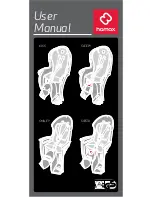
AMER-EN-TM-ODY July 2021
www.odysseybattery.com
several ways to recharge batteries and the best way depends on how the battery is being used.
Charging with an Alternator
When used in starting applications, ODYSSEY
®
AGM
2
12V batteries will be charged on-board using a
standard automotive alternator that generates anywhere between 14.2-14.5V at 77ºF (25ºC). We
recommend a temperature compensation of the charge voltage at ±18 mv per battery per ºC variation
in temperature from 25ºC. The warmer the temperature the lower the charge voltage and the cooler
the temperature the higher the charge voltage.
Charging with an A/C Powered Charger
When used in cycling or stand-by power applications, an A/C powered charger can be used to
recharge ODYSSEY AGM
2
batteries. There are two main types of A/C powered battery chargers on
the market: full recharging ability or maintaining a full SOC.
In order to recharge a battery that has been discharged, it is best to use an automatic charger with an
AGM setting that has the appropriate charge voltage and current per recommendations. For optimum
charging, the current output should at least 40% of the battery’s C10 rating. This means a battery that
has a 10-hour rating of 100 amp hours should be charged with 40 amps. Charge current should never
be less than 10% of the battery’s C10 rating. Voltages higher than 15.0 volts will cause irreversible
damage to the battery. Please refer to Figure 2 below for a graphical representation of the recom-
mended charge profile for ODYSSEY AGM
2
batteries used in non-starting applications.
Chargers that are designed for maintaining a full SOC are often called “float” or “trickle” chargers
and generally supply current in the 0.5 amp to 1.5 amp range. These chargers might also be called
maintenance chargers and are often used to maintain batteries that are used in seasonal applications
such as boats or RVs. These chargers are not suitable for recharging ODYSSEY AGM
2
batteries that
have been deeply discharged. However, they are suitable for maintaining batteries at a full state of
charge, provided the float voltage setting is appropriate. The recommended float voltage for
ODYSSEY AGM
2
batteries is 13.6 volts for a 12-volt battery 77°F (25°C).
There are also chargers available that charge using constant current. These chargers do not have
multiple charge phases as shown above in Figure 2. They simply supply current to the battery which
causes the battery voltage to rise. Once the battery voltage reaches the setpoint for a fully charged
battery, the charging will terminate. How long it takes to charge a battery with this method depends
on how deeply the battery is discharged and how much current the charger provides. See the Table 6
Figure 2
10
Summary of Contents for NSB-AGM
Page 1: ...AGM2 Technical Manual...


































